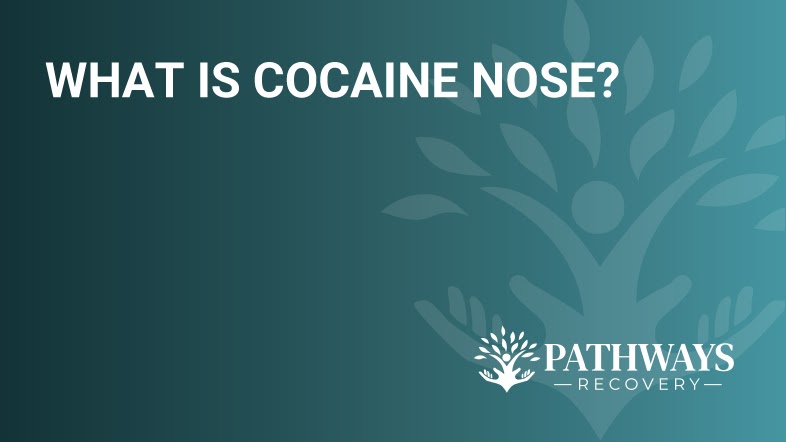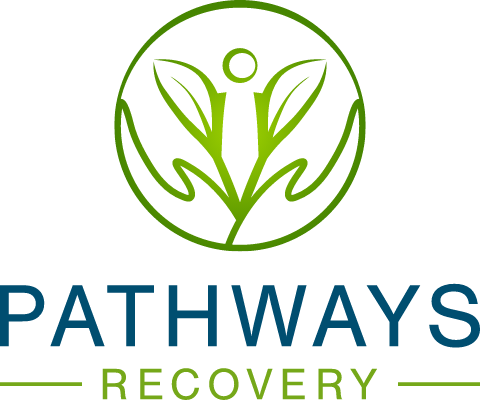What Is Cocaine Nose?
Most people understand just how addictive cocaine can be. But it can also cause a variety of health problems in both the short term and the long term.
If you’re not familiar with cocaine, the U.S. National Library of Medicine says, “Cocaine is a white powder. It can be snorted up the nose or mixed with water and injected with a needle. Cocaine can also be made into small white rocks, called crack. Crack is smoked in a small glass pipe.”
“Cocaine speeds up your whole body. You may feel full of energy, happy, and excited. But then your mood can change. You can become angry, nervous, and afraid that someone’s out to get you. You might do things that make no sense. After the ‘high’ of the cocaine wears off, you can ‘crash’ and feel tired and sad for days. You also get a strong craving to take the drug again to try to feel better.”
According to a 2018 report, California had the fifth-highest percentage of adults (2.97%) who had used cocaine in the last year.
On the streets, cocaine may be referred to as:
- Blow
- Coca
- C
- Coke
- Flake
- Crack
- Snow
There is one problem with cocaine use in particular that may fly under the radar: cocaine nose.
Due to its portrayal in pop culture, when you think of cocaine, you probably picture someone snorting a line of a white, powdery substance. That is, in fact, how many people take the drug. This can lead to problems with the nose.
Let’s take a look at what cocaine nose is, the signs of cocaine addiction, and how you can address it.
A Look at Cocaine Nose
Cocaine nose is a term used to describe the damage to the nasal region caused by snorting cocaine.
According to Dr. Robert Walton, a Chicago-based plastic surgeon, “Cocaine causes constriction or closing of blood vessels. When cocaine is snorted through the nose, it causes the blood vessels in the nasal lining to constrict. Chronic cocaine usage can result in prolonged constriction of the nasal lining blood vessels with the resultant death of these tissues. This results in sores in the nasal lining and septum that can lead to perforations of the septum, infection, loss of supporting cartilage, scarring, and eventual collapse of the nose.”
“The resultant constellation of deformities is commonly known as ‘cocaine nose.’ Unique to the cocaine nose is the relative sparing of the external skin cover, but underneath lie many, many problems.”
Cocaine nose is often regarded as a serious side effect of cocaine use. Not only can cocaine cause cosmetic worries, but it can also cause problems with the way air is humidified before reaching the lungs. For the most part, these damages can be permanent.
While the issues mentioned above may be more associated with long-term cocaine use, damages can occur before you know it.
In the short term, cocaine can cause you to have a runny nose, sneezing, nosebleeds, and nasal congestion. You may also develop scabs in your nose, sinus infections, and trouble breathing.
The best way to prevent cocaine nose is by staying away from cocaine altogether. If you’re currently battling a cocaine addiction, it’s recommended you seek professional treatment to address it.
More Dangers Associated With Cocaine
In addition to issues with your nose, cocaine can also affect other aspects of your life, including causing problems with the law, and it can raise the potential for investing in drugs you never intended to buy.
According to the National Institutes of Health, “Today, cocaine is a Schedule II drug, which means that it has high potential for abuse but can be administered by a doctor for legitimate medical uses, such as local anesthesia for some eye, ear, and throat surgeries. Dealers often dilute (or ‘cut’) it with non-psychoactive substances such as cornstarch, talcum powder, flour, or baking soda to increase their profits. They may also adulterate cocaine with other drugs like procaine (a chemically related local anesthetic) or amphetamine (another psychoactive stimulant). Some users combine cocaine with heroin.”
Another drug dealers sometimes add to cocaine is fentanyl, which is 80-100 times more potent than morphine, so it’s clearly quite dangerous.
You can also overdose on cocaine, which is a medical emergency and in some cases can be fatal. Currently, there are no medications used to treat cocaine overdose, but emergency personnel may attempt to restore blood flow to the heart in the event of a heart attack, stop a seizure, or restore oxygen to the brain in the event of a stroke.
If someone has overdosed on cocaine, call 911 immediately.
Signs of Addiction
Cocaine addiction affects everyone differently, which means signs of it vary from person to person. For the most part, addiction can be spotted and identified by the person battling it, or by someone close to them.
When it comes to cocaine, addiction can be identified by:
- Increased energy
- Cocaine eyes (dilated pupils and bloodshot)
- Mental alertness
- Increased heart rate
- Increased blood pressure
- Increased temperature
- Decrease appetite
- Constricted blood vessels
- Paranoia (fear of someone or something)
- Irritability
- Restlessness
- Hallucinations (seeing or hearing things that aren’t there)
- Wanting to stop using cocaine but being unable to
- Constant cravings for cocaine
- Financial problems
- Changes in group of friends
- Problems with family and friends
- Poor performance at work or school
- Abandoning activities you once enjoyed for cocaine
- Needing more and more cocaine to feel its effects
- Withdrawal symptoms
In some cases, cocaine can cause serious health problems, including:
- Heart attack
- Respiratory (breathing) failure
- Chest pain
- Stroke
- Seizure
- Nausea
- Abdominal pain
- Problems with heart rhythm
- Increased blood pressure
- Increased body temperature
- Blurred vision
- Coma
If you’re having any of these symptoms, seek medical attention right away.
What Are Co-Occurring Disorders?
There are many reasons why someone may turn to cocaine. It could be because they are attempting to numb themselves or forget about the problems they’re facing in their life, including mental health disorders.
A person is said to have co-occurring disorders when they have the combination of a mental health disorder and a substance use disorder (SUD), such as cocaine addiction. This is common and often found during the professional treatment process.
The National Institute of Mental Health says, “Researchers have found that about half of individuals who experience a SUD during their lives will also experience a co-occurring mental disorder and vice versa. Co-occurring disorders can include anxiety disorders, depression, attention-deficit hyperactivity disorder (ADHD), bipolar disorder, personality disorders, and schizophrenia, among others.”
There are currently three possibilities as to why these conditions co-occur. For example, one theory in particular is that common risk factors contribute to both mental health and substance use disorders, such as both being tied to genetics (inborn traits passed down from generation to generation).
Another theory is that mental health disorders contribute to substance use disorders. Because people with mental health disorders may seek an escape from their troubles, they may turn to substances like cocaine to “self-medicate.”
Finally, substance use disorders may contribute to mental health disorders since they may cause changes in how the brain operates.
There Is a Path to a Life Free from Cocaine
Even if you’ve struggled with addiction for years and have tried numerous times to leave cocaine behind and failed, that is no reason to give up. You can achieve a sober life.
No one should have to walk the road to recovery alone. I’m fact, having someone by your side as you focus on your recovery can keep you motivated and accountable. Remember, you are loved and cared for. Someone, somewhere is always willing to help. You’re never alone.
While your situation is unique, many people have overcome their cocaine addiction. You can, too. You have the strength to conquer your addiction.
You deserve a life of fulfillment, free from cocaine and the problems it has caused for you. Take the first step toward recovery today.
Call Pathways Recovery Today
Pathways Recovery provides three levels of addiction treatment solutions for those battling cocaine addiction, including a detox center, residential treatment, and intensive outpatient treatment.
The facility is designed to provide the best possible experience for clients as they work toward recovery. Pathways Recovery’s master’s-level clinicians and staff will work tirelessly to make sure each client is safe and well taken care of.
The detox center provides medically assisted detoxification for those who need it. Our clients will be supported through this entire process with a qualified team available to provide supervision for safety and peace of mind.
After the detox process, clients will enter the residential program to begin the healing process. Pathways Recovery treatment programs are tailored to the unique needs of the client.
Therapy sessions are designed to get to the root cause of addiction, psychiatry is used to focus on undiagnosed mental health disorders, and medication-assisted treatment is available if the client needs it.
The third and final part of the process is intensive outpatient treatment, which is perfect for clients transitioning from their residential stay. With three weekly group sessions available, clients can remain connected to the recovery process.
Pathways Recovery, located in Northern California, can give you the treatment you need. If you need cocaine rehab, we’re here for you. To learn more, call (916) 735-8377.
Frequently Asked Questions
How can I unblock my nose fast?
According to the U.S. National Library of Medicine, drinking clear fluids; applying a warm, moist washcloth to your face; inhaling steam by sitting in the bathroom with the shower running (do not inhale hot steam); using a vaporizer or humidifier; and a nasal wash can help unblock your nose.
How do you clear a congested nose?
The answer to the previous question can be helpful for this one as well. If you are congested, it may be worse when you’re lying down, so keeping your head elevated may also help. You can also purchase adhesive strips to place over the nose to help widen the nostrils. If you continue to have problems with congestion, contact your doctor.
What is nasal necrosis?
Nasal necrosis can be caused by cocaine use and refers to the death or damage of nasal tissue and cells. Signs of nasal necrosis may include scabbing, bleeding, and infections.
How do you heal a sore in your nose?
Since there are different types of sores you may find in your nose, it’s difficult to pinpoint one healing solution. It’s always recommended you see a doctor if you have any concerns. If your sore developed as a result of cocaine use, you should still see a doctor, and if you believe you have an addiction, seek professional treatment.
What are co-occurring disorders?
A person is said to have co-occurring disorders when they have the combination of a mental health disorder and a substance use disorder (SUD), such as cocaine addiction. This is common and often found during the professional treatment process. Learning how to manage both of these disorders is crucial when it comes to maintaining recovery.


